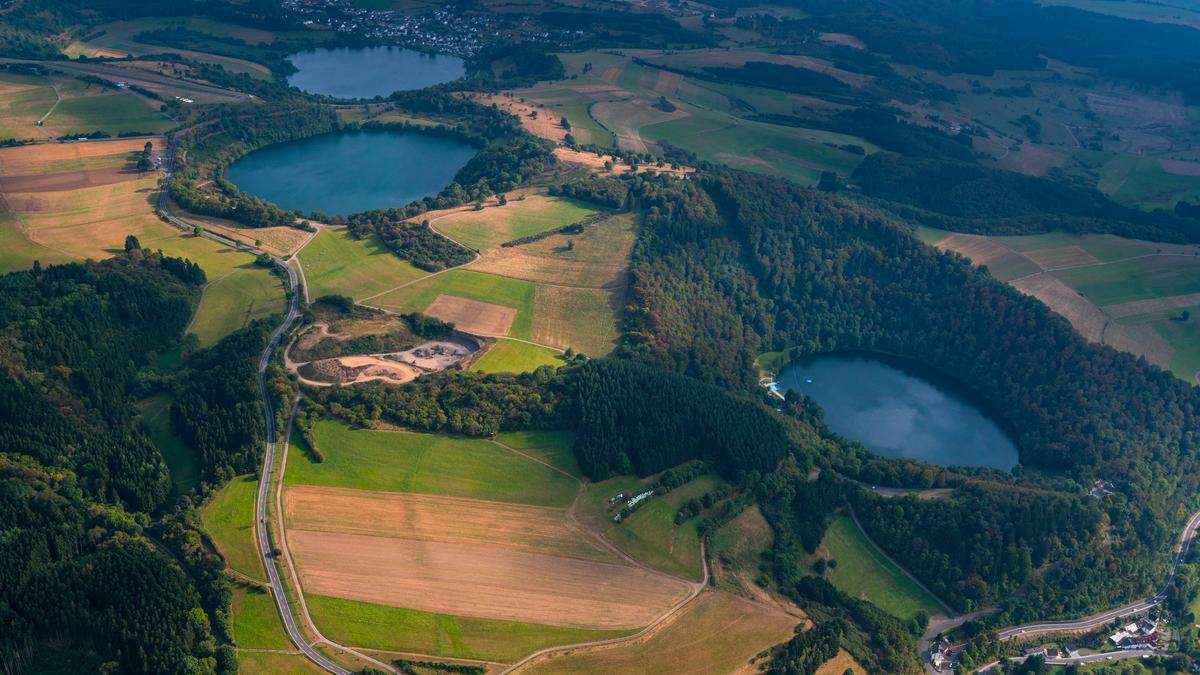Volcanic activity has been observed in a German region close to the Luxembourg border in recent years, scientists have said, dispelling a theory that volcanoes in the area were no longer active.
The German Eifel region has been rising at the rate of one millimetre annually for several years, with the cause of the elevation identified as volcanic activity by scientists in a 2020 study published by the Geophysical Journal International.
“No other region in northwestern Europe has such a level of vertical elevation,” said Corné Kreemer, lead author of the study.
The Eifel region is known to be dotted with craters, some of which have been filled with lakes: these are called maars. The most famous is Lake Laach, near Koblenz, a spot which was the scene of a major eruption 13,000 years ago.
There are three maars south of the town of Daun. The shape of the craters is clearly visible from the sky, and can be observed via Google Maps.
Lake Laach near Koblenz is the crater of an ancient volcano that experienced a major eruption 13,000 years ago © Photo credit: Thomas Frey/dpa
“Although the area appears dormant today, we can expect future activity,” Kreemer said.
However, readers should not be unduly alarmed, as a “Dante’s Peak” scenario – that disaster movie in which a scientist played by Pierce Brosnan tries to raise the alarm about the eruption of a volcano everyone thinks is dormant – is not on the agenda anytime soon.
Following Kreemer’s study, the Helmholtz Centre for Geosciences in Potsdam made it clear that there was no danger to people or infrastructure.
“Not even in the next 1,000 years,” the centre said. So you still have a bit of time left if you want to swim in a crater.
(This article was originally published by Virgule. Machine translated, with editing and adaptation by John Monaghan.)
